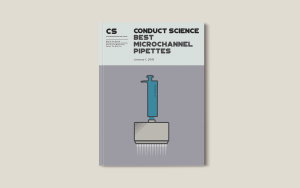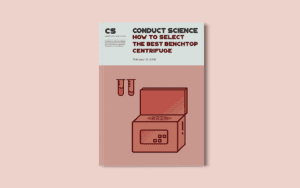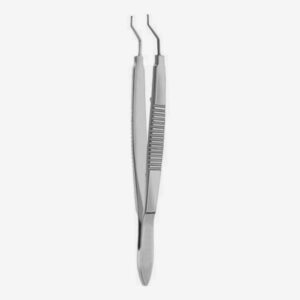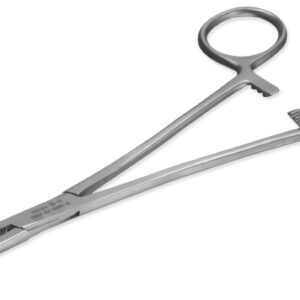
Best Microchannel Pipettes: A Comprehensive Guide
Introduction Pipetting, at first glance, would seem a fairly simple and easy task. Essentially described as glass or plastic tubes used to measure and transfer

As an Amazon Associate Conductscience Inc earns revenue from qualifying purchases
A spectrophotometer is an invaluable tool that can help both professionals and hobbyists extract vital information from light measurements. Spectrophotometers are defined as optical devices that measure the amount of light absorbed by a substance. To be more precise, spectrophotometers provide a non-destructive way to measure the amount of light transmitted through a sample or that is reflected from it, including during photoluminescence.
Interestingly, the first spectrophotometer was invented by chemist Arnold Beckman in 1939. Now, spectrophotometers are invaluable tools in medicine, biomedical research, production facilities, forensics, environmental testing, and quality control management. Such instruments can help experts to measure a wide range of entities, such as cell culture density, food qualities, kinetics, clothing, cosmetics, minerals, lights, paint, and much more.
Here we should note there’s a difference between spectrometers and spectrophotometers. Spectrometers measure the emission spectrum and light properties over a specific portion of the electromagnetic field, while spectrophotometers measure the absorption and transmission spectrum of a sample. Also, while spectrometers detect spectra and can work over different wavelengths, including gamma and X-rays, spectrophotometers work in spectral areas near the visible spectrum. Note that the ultraviolet/visible/near-infrared range is essential in spectrophotometry; in fact, invisible spectrophotometry, the light properties of a sample can be observed by the color changes in it.
Furthermore, we should note that all spectrophotometers contain spectrometers. To be more precise, spectrophotometers consist of spectrometers and photometers: spectrometers transmit a beam of light and split it in different wavelengths; after the desired wavelength passes through the solution, the photometer detects the amount of light absorbed and sends data to a galvanometer or a digital display.
Spectrophotometers are popular optical instruments that can be used in a wide range of applications, such as environmental testing, chemistry, textiles, and forensics. Nevertheless, choosing a spectrophotometer can be challenging because detection limits, analytical working range, data quality, measurement time, and the wavelengths accepted by the grating are all factors to consider. Before buying a spectrophotometer, users should assess three major aspects:
Requirements: Spectrophotometers can be used in different settings, so it’s no surprise they come in all shapes and sizes. Thus, prospective buyers should evaluate their own goals and the instrument’s detection limits. Depending on the specific research goals, users can choose between different units that detect different wavelengths, such as visible light spectrophotometers, ultraviolet/visible spectrophotometers, near-infrared spectrophotometers, and nuclear magnetic resonance devices, atomic absorption spectrophotometers, mercury analyzers, and fluorometers. There are also microspectrophotometers to measure microscopic samples, suitable for thin-film measurements, microcalorimetry, and reflectometry. That said, wavelength limits are not the only factor that determines the classification of units. When it comes to sampling throughput, for instance, spectrophotometers can be divided into a single sample and multi-sample units. Last but not least, devices can be classified according to the light path employed: there are single beam, dual-beam, and split beam units.
Specifications: Although there are different types of units, which can be classified according to the wavelength spectrum, sample throughput, and light path – the basic mechanisms of spectrophotometers are the same. As mentioned above, spectrophotometers contain spectrometers and photometers. Such devices consist of a light/energy source, a filter/grater to set the desired wavelengths, a place for samples, and a radiation detector/phototube to convert the energy into a measurable unit. Note that solutions are placed in cuvettes or microplates and inserted into the device, after which spectrophotometers emit light and measure light intensity at different wavelengths.
Total costs: As stated above, detection limits, data quality, analytical working range, and measurement time are vital in determining purchasing choices and costs. Users should also consider if the unit has customizable or preconfigured testing method buttons, especially when it comes to consecutive analyses and measurement time. The actual footprint of the unit and its data export options can also impact prices. Last but not least, associated consumables should also be considered when calculating the total cost of a spectrophotometer.
Spectrophotometers are versatile scientific products used in a variety of research and production settings. As stated earlier, there’s a wide range of spectrophotometers prospective buyers can choose from:
With a variety of units on the market, choosing a spectrophotometer might be a challenging task. Note that some of the most notable manufacturers of spectrophotometers include Agilent, Shimadzu, Thermo Fischer Scientific, Hach Technology, Perkin Elmer, and GE Healthcare. Based on different characteristics and user reviews, here are the best spectrophotometers for sale:
Hach DR1900-01H DR 1900 Portable Spectrophotometer is a powerful portable unit. This spectrophotometer comes with over 220 built-in preprogrammed methods, which allows it to perform a large number of tests. Note that the model supports testing with a wavelength range of 340 nm to 800 nm. With its large display and clear interface, the unit is an easy to operate field instrument, suitable for various laboratory analyses and fieldwork.
Bespick Digital Display Spectrophotometer (Ray Spectrometer/Visible Spectrometer for Medical Testing, Food, Petrochemical Industry) is a versatile product that can be used in medical testing, environmental control, petrochemical settings, criminal investigations, and geological explorations. The unit consists of tungsten illumination and a large sample chamber. Also, it has an automatic wavelength adjustment and storage functions to ensure high accuracy. Last but not least, this spectrophotometer is equipped with an RS232 output port in order to connect to a printer or a computer.
MXBAOHENG UV–5100 UV/VIS Spectrophotometer (Photometer 200–1000nm, Bandwidth 4nm) is a great unit with a photometric performance in the 200–1000 nm range. The unit has both tungsten and deuterium lamps, which can be turned on and off individually in order to extend the unit’s lifetime. Also, this spectrophotometer has a large screen (128×64) that facilitates use and readings. Note that there is optional software UV-Professional, which can expand the unit’s applications to kinetics and quantitative measurements.
UV–5200 UV/VIS Spectrophotometer with Scanning Software, 190-1100nm Wavelength Range, 2nm Bandwidth is a great single beam unit that operates within a 190-1100 nm wavelength range. Note that its bandwidth is 2 nm. The unit’s large screen can display a total of 200 groups of data (five per screen), as well as a standard curve and curve equation. Furthermore, this spectrophotometer ensures easy transfer and storage of data to facilitate research and interoperability.
CGOLDENWALL Digital Spectrophotometer Spectrometer (Tungsten Lamp) for Lab Medical Testing, Food, Petrochemical Industry is a small single-chip system with advanced optics, a sealed grating monochromator, and easy to replace tungsten halogen lamps. This visible spectrophotometer combines calculation accuracy and beautiful design, ensuring high user experience.
Thermo Electron 840-301000 Biomate 160 UV/Visible Spectrophotometer (110V, 35.5 cm Length, 38.5 cm Width 19.5 cm Height) is an easy to use automated UV/VIS unit. Note that this spectrophotometer offers pre-programmed assay methods ideal for acid and protein concentration and cell culture analyses. Additionally, the unit comes with a high-resolution color touchscreen and Wi-Fi connectivity to facilitate usability.
Spectrophotometers are sophisticated tools, and as such, they require adequate maintenance. Taking care of spectrophotometers is essential to ensure a long lifetime and accurate measurements:
Spectrometers are sophisticated optical units that measure the amount of light transmitted through a sample, or that reflected off it, which is highly needed in medicine, biomedical research, production facilities, forensics, environmental testing, and quality control management. Given their diverse applications, it’s no surprise spectrophotometers come in different shapes and sizes, with visible light spectrophotometers, ultraviolet/visible spectrophotometers, near-infrared spectrophotometers, nuclear magnetic resonance devices, atomic absorption spectrophotometers, mercury analyzers, and fluorometers being popular models.
Before choosing a spectrophotometer, however, prospective buyers should consider three major factors: requirements, specifications, and total costs. Note that detection limits, data quality, analytical working range, light path, size, sample throughput, and measurement time are all factors to consider. Adequate maintenance is also a must to ensure long life and accurate use.

Introduction Pipetting, at first glance, would seem a fairly simple and easy task. Essentially described as glass or plastic tubes used to measure and transfer

Resource Identification Initiative: A Key to Scientific Success and Analytics The key to success can be found in the essential principles of the Resource Identification

INTRODUCTION AND BRIEF HISTORY One of the most important pieces of equipment in the laboratory is the centrifuge, which facilitates the separation of samples of

INTRODUCTION AND BRIEF HISTORY One of the most important pieces of equipment in the laboratory is the centrifuge, which facilitates the separation of samples of






DISCLAIMER: ConductScience and affiliate products are NOT designed for human consumption, testing, or clinical utilization. They are designed for pre-clinical utilization only. Customers purchasing apparatus for the purposes of scientific research or veterinary care affirm adherence to applicable regulatory bodies for the country in which their research or care is conducted.